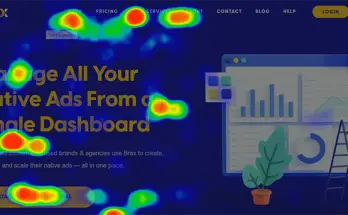Bounce rate is an internet marketing metric that refers to the number of website visitors who end up on your website and then immediately leave, as opposed to sticking around and exploring the other pages.
But how important is the metric? Does it impact your SEO? Read on and let’s find out…
Is bounce rate a direct ranking factor in SEO?
This is a subject of much controversy. While Google has repeatedly stated that bounce rate is not a direct ranking factor, many SEOs believe that it can and does influence a website’s overall rankings.
There’s no evidence to support this. However, just because something isn’t necessarily a direct ranking factor, it doesn’t mean that you should neglect it.
The fact is, if you have a high bounce rate, then it is clear there is something not quite right with your website:
- Do you understand the search intent behind your keywords?
- Is your website meeting expectations?
- Do you have high-value content on your home page?
- Is it immediately clear who you are and what you do?
- Do you have a clear, unique value proposition?
How does bounce rate impact your business?
So, how can a high bounce rate impact your business? Put it this way: it’s rarely good. The fact is, if people are heading to your website and a large number of them are leaving your website before exploring other pages, it means you aren’t meeting their expectations.
A high bounce rate means:
- Less time spent on your website (which is a ranking factor).
- Lower conversion rates (fewer sales).
If people are immediately leaving, they are not spending much time on your website at all. This sends signals to Google that your website is not meeting their users’ expectations. As a result, Google will assume that your website is not interesting and that you have low-value content. In other words, your rankings will begin to drop as Google chooses your competitors over you instead.
And of course, the less time people spend on your website, the lower your conversion rates will ultimately be.
If you want to make as much money through your website as possible, you’re going to need to make some changes…
How can you reduce your website’s bounce rate?
Here's a quick list of techniques you can use to effectively reduce the bounce rate of your website.
- The first step to reducing your website’s bounce rate is audience research. If people are constantly leaving, then you need to better understand who your ideal customers are and what they are looking for.
- Following that, conduct extensive keyword research and understand the ‘search intent’ behind those keywords. That is the best way to position your messaging accordingly – so that you meet (and exceed) expectations.
- You should also measure your page load speed and seek to improve it. If your website takes too long to load, people will get bored and leave for a competitor website.
- The overall UX design of your website is also important. How easy is it to navigate? Do you have intuitive internal linking? Do you have a clear CTA (call to action)? If the ‘next steps’ are unclear, your website visitors will look for alternatives elsewhere.
- Consider adding ‘exit-intent’ popups. When implemented well they can effectively reduce bounce rate.
- Hire a good SEO service company to help identify the key problem areas on your website and improve them accordingly. They can also help you develop a digital marketing strategy to drive even more traffic to your website and optimize for optimal conversions. For example, if you live in Nevada, you can look for a good SEO service in Las Vegas!
Conclusion
The most important thing about your website should be the user experience. Yes, you want to please Google and improve your SEO rankings however you can, but your website visitors should always come first.
If you have a high bounce rate, it is mostly a UX issue – so make sure you take the necessary steps to address and resolve it.



